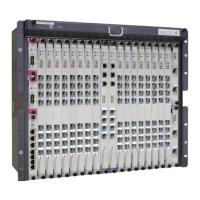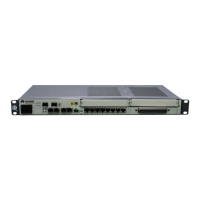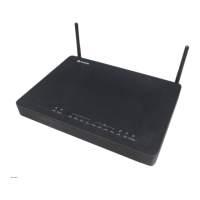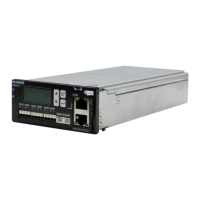11.4.2.6 Configuring VDSL2 Service Flows
This topic describes how to configure different service flows on GE remote extended subracks
for different services so that service packets on HGWs can be forwarded at Layer 2 according
to the planned VLAN and forwarding policies.
Data Plan
The following table lists the data plan for configuring service flows.
Service
Type
VLAN Plan Remarks
Internet
access
service
S-VLAN: 100; VLAN
attribute: stacking
C-VLAN: 1001–1002
The Internet access service use dual VLAN tags
(S-VLAN+C-VLAN) to differentiate users.
For details, refer to 11.2.3 Principle of Internet
Access Service Data Plan.
Voice
service
S-VLAN: 200
C-VLAN: 200
The voice over IP (VoIP) service is a carrier-
operating closed service. It primarily uses only S-
VLAN tags which are transparently transmitted
from a GE remote extended subrack to an HGW.
For details, refer to 11.2.5 Principle of VoIP
Service Data Plan.
NOTE
VLAN planning is required only when HGWs provide
all VoIP services. Service boards in the extended subrack
do not process traditional public switched telephone
network (PSTN) voice services that are transmitted
through splitters. PSTN voice signals are transparently
transmitted through the splitter upstream to PSTN
networks.
VoD
service
S-VLAN: 300
C-VLAN: 300
The PSPV mode is recommended for the video on
demand (VoD) service because the service requires
fewer VLANs.
The voice over IP (VoIP) service is a carrier-
operating closed service. It primarily uses only S-
VLAN tags which are transparently transmitted
from a GE remote extended subrack to an HGW.
For details, refer to 11.2.6 Principle of IPTV
Service Data Plan.
SmartAX MA5600T/MA5603T/MA5608T Multi-service
Access Module
Commissioning and Configuration Guide 11 FTTB and FTTC Solution Configuration
Issue 01 (2014-04-30) Huawei Proprietary and Confidential
Copyright © Huawei Technologies Co., Ltd.
1050
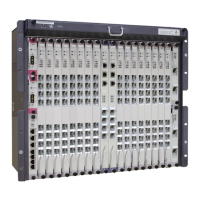
